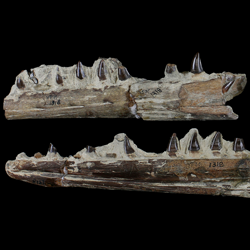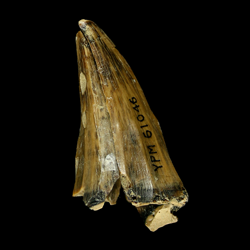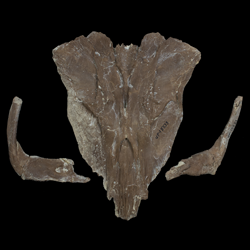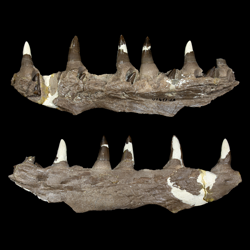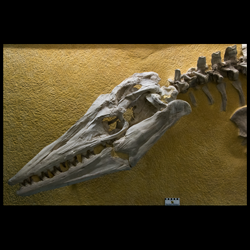
Mosasauridae
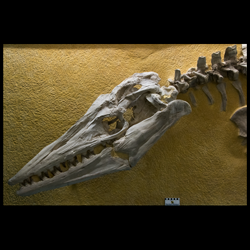
- Phylum: Chordata
- Class: Sauropsida
- Order: Squamata
- Family: Mosasauridae
Overview
Mosasaurs are only known from the Late Cretaceous. They were top predators of the Western Interior Seaway and evolved into a diversity of forms during their ~25 million years of existence. They ranged in size from less than 5 meters (16ft) (Clidastes) to 14 meters (45ft) (Tylosaurus). It is thought their rapid evolution led to the extinction of pleisiosaurs and ichthyosaurs, becoming the top predator of the sea. By the end of the Late Cretaceous, they spread all over the world. They were likely ambush predators with a diet ranging from cephalopods, clams, fish, turtles, to pleisiosaurs and other mososaurs. Those with pointed teeth hunted active prey, while others had rounded teeth for crushing mollusks. Their long bodies and thin tails allowed for 'snake-like' movements through the water, but was probably not very efficient for speed.
Mosasauridae Gervais, 1852
Common Name: Marine reptile/aquatic lizard
Extant/Extinct
Key morphological features:
SIZE: Up to 17 meters (55ft)
Paleoecology:
MOBILITY: Mobile
FEEDING MODE: Predator
HABITAT: Epifaunal
Sources:
Everhart, M. J., 2005. Oceans of Kansas: A Natural History of the Western Interior Sea. Indiana University Press, Bloomington. 322 pp.
